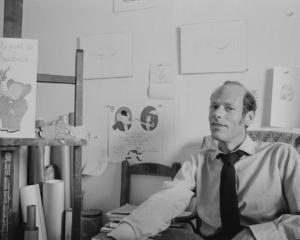NEW ZEALAND NURSES: CARING FOR OUR PEOPLE 1990-1950
Pamela Wood
Otago University Press
REVIEWED BY JIM SULLIVAN
Pamela Wood is nurse who also has a PhD in history and her book is a neat balancing act between the demands of giving an historical context to the nursing profession and providing a wealth of anecdote from the wards.

Nursing, originally an unregulated free-for-all, became part of the legislative strictures which professionalised the medical world around the end of the 19th century and the reasons for and effects of those Acts which regularised nursing are well covered. The spirit of Florence Nightingale hovers constantly as nursing becomes a vocation and details of the first registered nurses, both Maori and pakeha, reveal much about the transition to a professional body.
Organising the vast amount of material into manageable portions has been achieved with chapter topics like: becoming a nurse, working in the back blocks, in wartime and during disasters. Of course, such coverage must be selective, but underlying it all are the universal questions. Why become a nurse? What is special about nursing?
The answers to questions like these vary from nurse to nurse but “caring for our people” remains the constant. Such caring takes place amidst extraordinary difficulty as stories from the district nurses in remote bush settlements confirm. As well, what now seem primitive and gruesome medical practices were part of a nurse’s daily routine, as was an expected subservience to doctors and matrons.
The loosening of rules about dress, shorter working hours and moving away from the military strictness of the nurses’ home all emerge during the latter part of the book and presage the coming of the “modern” nurse (a breed which includes the male nurse, practically unheard of, apart from wartime medical orderlies, until fairly recent times).
In fact, the book’s cut-off point of 1950 is appropriate, as the post-war years saw the beginnings of major changes in nursing. As well, to have included the last 70 years would have produced not only an unwieldy volume but perhaps two quite different histories.
What gives New Zealand Nurses a special role, not usually dealt with in the wealth of nursing memoirs already published, is the author’s frequent references to New Zealand’s place in the international world of nursing. Being the first country to legislate, the first to have a chief nurse in a central government department and other pioneering achievements are the administrative backdrop to a strangely melded history which puts nurses in the vanguard of women’s equality.
This concern for others is found in the wealth of oral history held in the archives but the powerful personal stories in New Zealand Nurses come largely from the nursing magazine Kai Tiaki, perhaps an acknowledgement that accessing and listening to oral history recordings is something historians find just a trifle onerous.
We are told that at one time nurses were given up to 10 hours of lectures on the history of their profession and in a piece from the past of particular interest to Otago readers, Wood finds the tale which tops and tails her history. It tells of a nurse at Naseby Hospital in 1901 being presented with flowers by Crimean veteran James Crawford who told her of his meeting with Florence Nightingale.
The book confirms that, acknowledged or not, the “Nightingale spirit” has been very much at the heart of New Zealand nursing.











